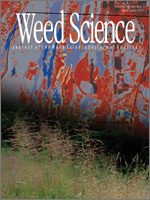Rising demand for organic soybeans and high price premiums for organic products have stimulated producer interest in organic soybean production. However, organic soybean producers and those making the transition to organic production cite weed management as their main limitation. Current weed management practices heavily rely on cultivation. Repeated cultivation is expensive and has negative consequences on soil health. Research is needed to improve organic reduced tillage production. Rye cover crop mulches were evaluated for weed suppression abilities and effects on soybean yield. Experiments were planted in 2008 and 2009 at three sites. Rye was planted in the fall of each year and killed at soybean planting with a roller/crimper or flail mower, creating a thick weed-suppressing mulch with potential allelopathic properties. The mulch was augmented with one of three additional weed control tactics: preemergence (PRE) corn gluten meal (CGM), postemergence (POST) clove oil, or postemergence high-residue cultivation. Roll-crimped and flail-mowed treatments had similar weed suppression abilities at most sites. There were no differences between CGM, clove oil, or cultivation at most sites. Sites with rye biomass above 9,000 kg ha−1 of dry matter provided weed control that precluded soybean yield loss from competition. In Goldsboro 2008, where rye biomass was 10,854 kg ha−1 of dry matter, the soybean yield in the rolled rye treatment was not significantly different from the weed-free treatment, yielding at 2,190 and 2,143 kg ha−1, respectively. Likewise, no difference in soybean yield was found in Plymouth 2008 with a rye biomass of 9,256 kg ha−1 and yields of 2,694 kg ha−1 and 2,809 kg ha−1 in the rolled rye and weed-free treatments, respectively. At low rye biomass levels (4,450 to 6,606 kg ha−1), the rolled rye treatment soybean yield was 628 to 822 kg ha−1 less than the weed-free treatment. High rye biomass levels are critical to the success of this production system. However, high rye biomass was, in some cases, also correlated with soybean lodging severe enough to cause concern with this system.
Nomenclature: Clove oil; corn gluten meal; soybean, Glycine max (L.) Merr.; rye, Secale cereale L





